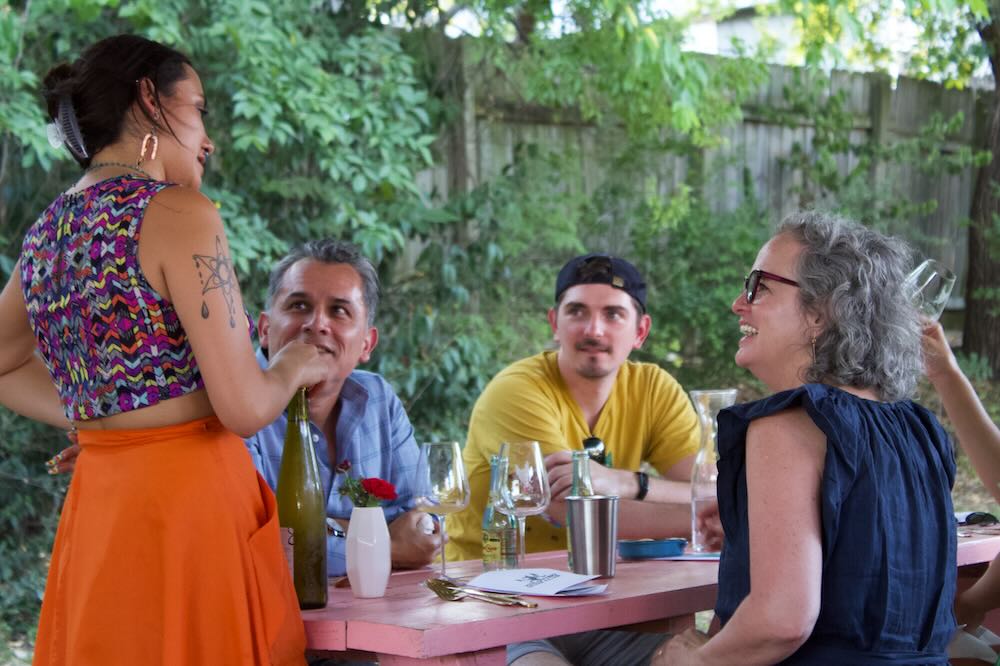Table of contents
Winning a James Beard Award felt surreal. The moment they called my name, I practically floated to the stage.
The honor has brought opportunities I never imagined. Who would have thought we’d serve senators and celebrities in our neighborhood taqueria in Austin, Texas? Or represent the United States as part of a culinary diplomacy team in Japan?
My wife, Sara, and I didn’t foresee any of this when we were struggling to open our restaurant on a budget of only $65,000.
People often ask me, “How did you win the James Beard Award?” It starts with exceptional food, of course. But looking back over the past five years, I realize that our journey has involved crucial lessons beyond the kitchen.
Three key lessons we learned from our crash course in running a restaurant
Before opening Nixta Taqueria in 2019, I trained under incredible chefs in New York, Los Angeles, Mexico, and Austin. I thought I was ready to run my own restaurant.
But transitioning from cook to chef and owner requires a big shift in mindset.
Once we signed our lease, I figured we’d open the restaurant in a month. Wrong. We got a crash course in the complexities of starting a restaurant: getting permits and a liquor license, passing inspections, raising money, and more.
The whole process took us nine months. I was nervous every time we had to pay rent and utilities with no income. But we learned some invaluable lessons:
- Embrace DIY: When we signed our lease, we planned to hire a general contractor. But the quotes far exceeded our budget, and we didn’t want to bury ourselves in debt. We opted for a DIY approach, to the point that we watched YouTube videos to learn tiling. This hands-on effort didn’t just save us money. It also refined our menu: we served tacos to friends who helped with the build, and their feedback guided our menu development.
- Ask for help: At first, our DIY approach made us hesitant to ask for help. But we got over that reluctance — and thank goodness we did. We may not have encountered certain challenges before, but experienced restaurateurs had. Consulting others helped us navigate these issues. It also reminded us that we had a good support network.
- Lead with vision: Creating Nixta required us to articulate a clear vision. Sara and I developed a mood board to define our restaurant’s essence and the experience we wanted to offer. Authenticity mattered most to us. If we stayed true to who we were, to our cultures and our values, people would connect with our vision. One thing I’ve learned from a career in restaurants: people will sniff out when something doesn’t feel authentic.
Learn to adapt
Once Nixta opened, we learned another important business lesson: Play the cards you’re dealt.
When we started, our 25-seat dining room couldn’t meet all the demand. We had 10,000 square feet of dirt in the backyard that we never planned on touching. We had to be resourceful, though, so we added outdoor dining.
That outdoor space saved us during the pandemic. Over time, it expanded from 30 seats to 100. Nixta became known as an outdoor restaurant.
This success created a new challenge: What do we do with our indoor dining room?
Sara and I decided to introduce our masa omakase. That style might seem unconventional for a neighborhood taqueria, but it made sense for a few reasons.
First, until that point, our restaurant hadn’t accepted reservations, and customers kept asking us when that would change. Establishing the omakase allowed us to act on their feedback and start taking reservations.
Second, the tasting menu expanded the range of offerings to customers. You can still come in and get delicious tacos from the counter. But now if you want to have a fancy dinner, you can get that, too. A lot of folks enjoy both styles, depending on their mood and the occasion.
Third, from the beginning, Sara and I saw Nixta as an expression of who we are and what food means to us. With the tasting menu, we incorporate dishes that are personal to our lives and our families. We blend elements of my Mexican heritage with Sara’s Persian roots, and we give customers an inside look at where we come from. We also showcase seasonal produce from our garden.
Simplify operations
Another critical lesson we’ve learned? Keep operations as simple as possible.
Restaurant work is so fast-paced that you need to make things efficient wherever you can. After experimenting with various point-of-sale (POS) systems, we found Square to be exceptionally user-friendly. And I’m not the most tech-savvy guy!
Square bundles everything together — sales reporting, employee timekeeping, and more. That means employees can focus on delivering exceptional customer experiences.
Operational details like this don’t usually make it into James Beard Award acceptance speeches. But getting them right frees up so much time and energy for your whole team.
And it has let me focus on what I love most: creating memorable dining experiences every day. It’s the coolest job in the world.
![]()








